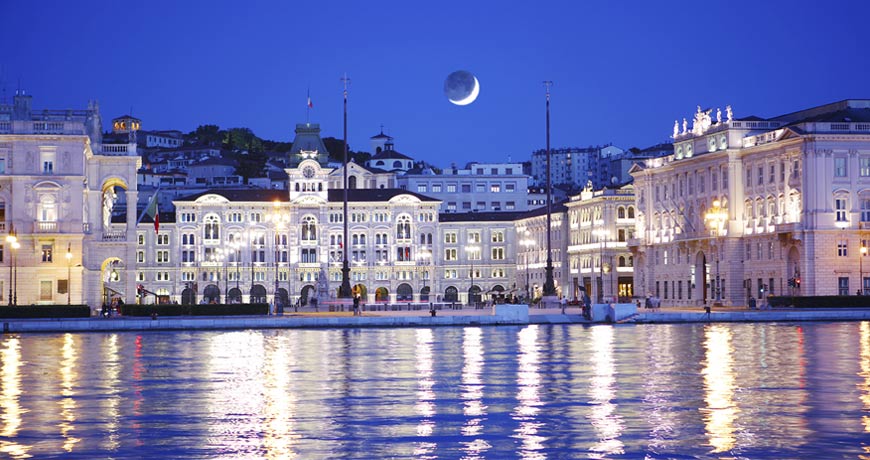Touristic information: Trieste

Trieste, a border city with many faces, like all sea ports shows the signs of the passage of different civilizations and cultures, and its charm derives from this. It was the outlet to sea for the Hapsburg Empire, and it still preserves today its central European appearance, made by palaces of stern design and large squares and avenues. But Trieste is also a multiethnic city: a crossroads of cultures, throughout the centuries it has been inhabited by various communities, such as Anglican, Greek, Lutheran, Orthodox , Hebrew and Islamic; this tradition hasn't stopped, as it is true that a large part of the cultural revival the city is undergoing recently has mostly started in the university, with its young people from all over the world.
Ups and downs, this is Trieste's leitmotif. At the end of the downhill you find the sea and during the summer season a walk along the Barcola sea promenade is a must; but if you move upwards you will find a breathtaking view. A good observation point to gaze over the city is the Castello di San Giusto, a 15th century military construction, rising on the place where in pre-roman times there were already some fortifications, the traces of which are still present in the square in front. Next to the castle the Cathedral, built in the 14th century from the fusion of two pre-existing Roman basilicas.
The white outline that meets the eye if you look at the Gulf for the first time is the Castello di Miramare, built around 1860 as the home of Archduke Massimiliano d'Austria and his wife Carlotta. The apartments, which still maintain the period's decorations and furnishings, are open to the public, but especially the surrounding park is worth a visit for its rare plants and trees.
Piazza Unità also looks to sea, it is Trieste's salon and is among the most beautiful European squares as well as possibly the largest one opening up to sea. If the Bora wind isn't blowing it's worth going for a stroll on the Molo Audace. The square is a meeting place for Trieste citizens and contains one of the most famous historic caffè, the Caffè degli Specchi, built in 1839. The oldest of trieste's caffè is just a little way away, Tommaseo, which opened in 1830 in the tradition of the most elegant Viennese cafes.
The presence of various religious communities has enriched the city with many religious places. A walk between the "shores" of Trieste is therefore a unique opportunity to visit them and appreciate their individual characteristics and differences. Certainly deserving attention are the following: the Greek-Orthodox Church San Nicolò dei Greci, the Israeli temple and the Serb-Orthodox church of San Spiridione.
In a seaside city that is famous for its strong wind, the foremost event could only be a sailing regatta. La Barcolana, or Coppa d'Autunno, fills the gulf with little white triangles and our advice is to enjoy the show from the surrounding hills. The race normally takes place in October, if the Bora wind allows it.
